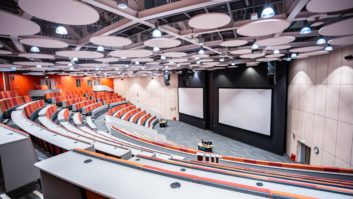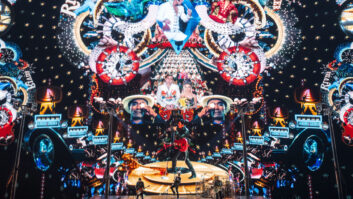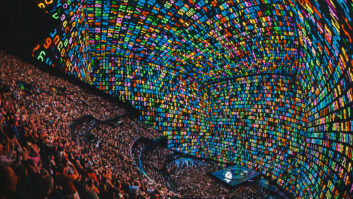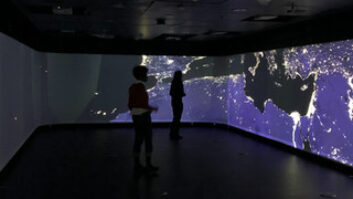Do you like to take your work home with you? Patrick Van Steelandt, commercial director of Niko, must do – because his home is also a showcase for his company’s home automation technology. Paddy Baker paid a visit.
When Niko commercial director Patrick Van Steelandt first looked at installing his company’s technology in his house, his intention was modest – he wanted to automate some roll-down shutters. However, as project engineer Didier Legrand explains: “While Mr Van Steelandt and I walked through the house, we saw more and more places that were just screaming out for a Niko solution. In the end he was so enthusiastic that we just made a complete Niko house out of it.”
Legrand’s first thought was that the system would have to communicate wirelessly via RF, as it would not have been feasible to run cable all through the 54-year-old house. His ideas changed when he realised that the cellar, running under the full footprint of the house, enabled a fully wired solution to be installed.
The solution is certainly extensive, touching just about every room in the house, and incorporates multi-room audio and control of all the lighting, curtains, shutters and blinds. The brief, though, was relatively straightforward – to make the house a calming, cocooning place, away from the stresses of modern life.
The backbone of the system is Nikobus, a 9-volt bus running on a proprietary two-wire cable. The controller modules are mounted in cabinets in three cupboards, one directly above another on three floors – in the site of an old laundry chute. This arrangement was chosen to minimise the overall length of cable runs in the house.
There are three different types of user interface in the house. There is a 7in widescreen touchscreen in the kitchen (finished in a highly scratchproof material), which can be used to select lighting schemes and audio sources. There are wall switches in every room – many of which get little use, but the decision was taken to replace all the existing conventional light switches with Niko fittings. Alternatively, a Philips Pronto, programmed with a Niko user interface, can be used all round the house, and also in the garden, thanks to a number of IR receivers strategically located in various rooms.
In addition, there are movement detectors around the house, mostly used to trigger low-level lighting when rooms are entered. So, for instance, if a visit to the bathroom is required in the middle of the night, ‘navigation’ lighting enables the way to be found without rousing the sleeper to full wakefulness.
Niko’s philosophy is to create ambiances, or moods, for the various uses that rooms are put to at different times of day. Legrand explains that, particularly for rooms such as the kitchen and upstairs bathroom that were completely stripped and rewired, “We don’t think in terms of lights and switches, but in terms of comfort functions – based around people’s habits during the day”.
So, for instance, in the kitchen, different ambiances are programmed for different mealtimes. To watch television in the lounge, a single button press not only turns on the TV and video sources, it also dims the lights and closes the curtains. When Van Steelandt wakes in the morning, he presses a switch by the side of his bed that turns on the lights in the adjacent dressing room, as well as the lights and the music in the bathroom. And last thing at night, or when going out, just one button turns off all the lights and audio throughout the house.
Monochrome and colour-changing RGB LED strips, making use of the recently introduced Nikobus LED control module, are featured in key locations in the house: for instance, on the entrance hall ceiling, on the underside of the kitchen worktops and behind the television. On the staircase, discreet circular LED lights from Niko’s Mysterious range are set above each step, to illuminate in an unobtrusive way. For each set of colour-changing lights, the ‘loop’ – the colours displayed and the speed of transition – is fully programmable.
Audio is networked through the house via a Niko Allegretto A88 system, which can route up to eight inputs across eight zones. Currently four sources are used – two FM tuners, a CD player and an iPod – across seven zones in the house, comprising lounge, dining room, study, kitchen, gym, bedroom and bathroom. In many of these rooms, Amina ‘invisible’ in-ceiling speakers have been installed. In the dining room, however, the existing ceiling was retained and so Bose speakers have been installed. There is also a Bose 5.1 DVD surround system in the lounge, and Bose exterior speakers on the patio.
Aminas play music in the extensive bathroom, where two key lighting ambiances have been created: one for getting up quickly in the morning, centred around the wet-room shower area (with enormous ceiling-mounted showerhead), the other for relaxation in the spa bath or steam cabinet.
Van Steelandt has chosen from the variety of finishes and button patterns available from Niko’s portfolio of switches. The most striking of these are in the dining room, which features switches (and also power sockets) from the Mysterious range. These are even more discreet than their light counterparts; fitted flush to the wall, the switches can be wallpapered or painted, their presence shown only as an illuminated ring around the switch.
The installation is still a work in progress; for instance, once a gate has been fitted at the entrance to the property, an access control system will be fitted, complete with video screen in the gymnasium. The swimming pool, pool house and garden light will also be added to the network in due course.
Legrand estimates that a project of this scale would typically have an end-user price of around Ä30,000. Smaller Nikobus installations start at Ä5,000-Ä6,000.
The overall impression that one gets from the house is that the technology fits around the owner’s lifestyle, rather than vice versa – and Van Steelandt’s wish for a calming cocoon from the outside world has been granted. Except, of course, when clients, employees or even journalists want to come and take a look at the installationÖ







